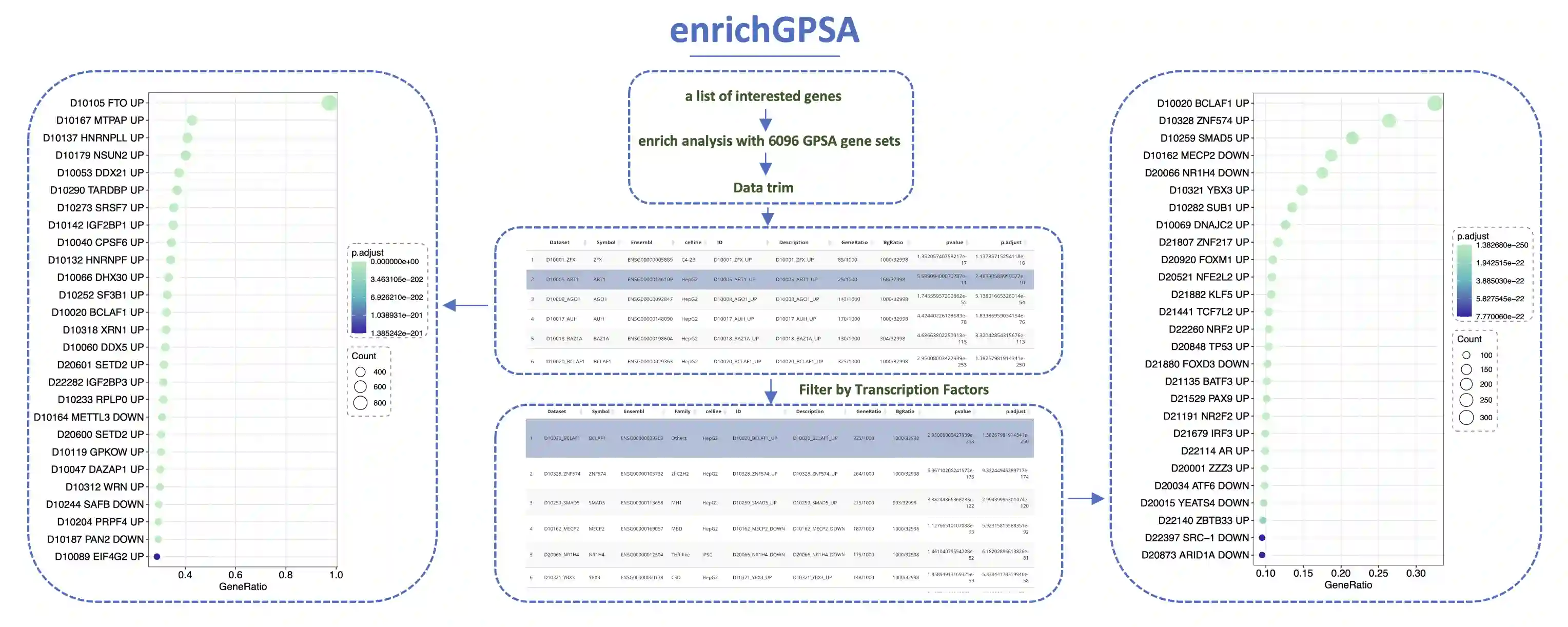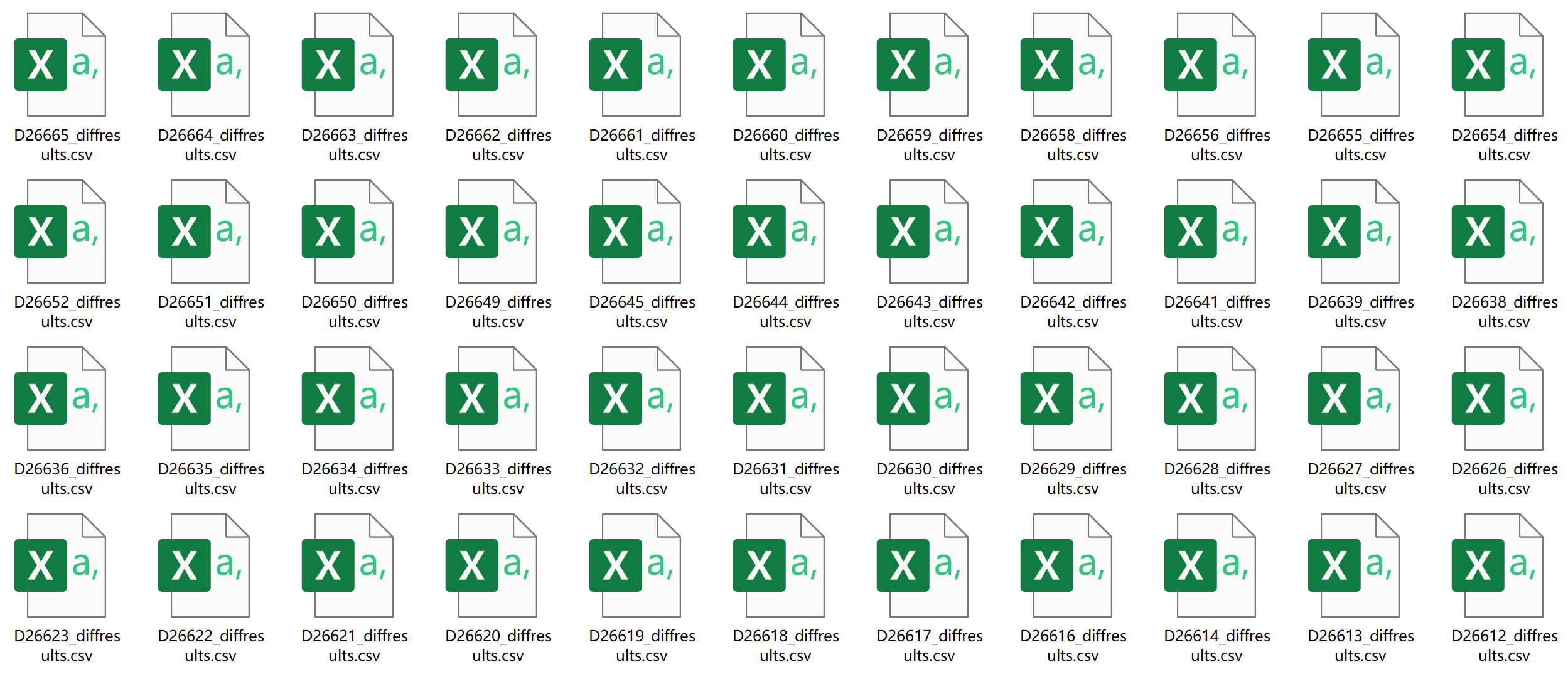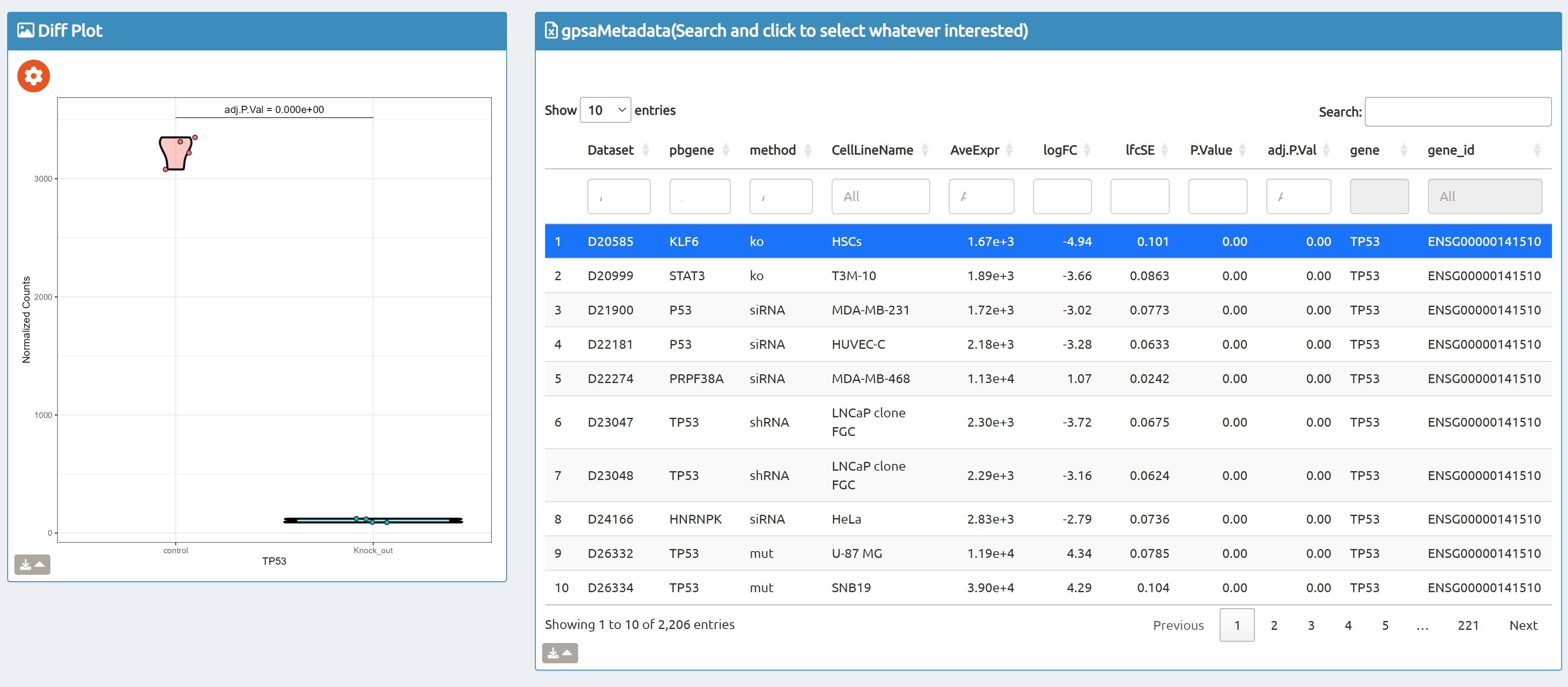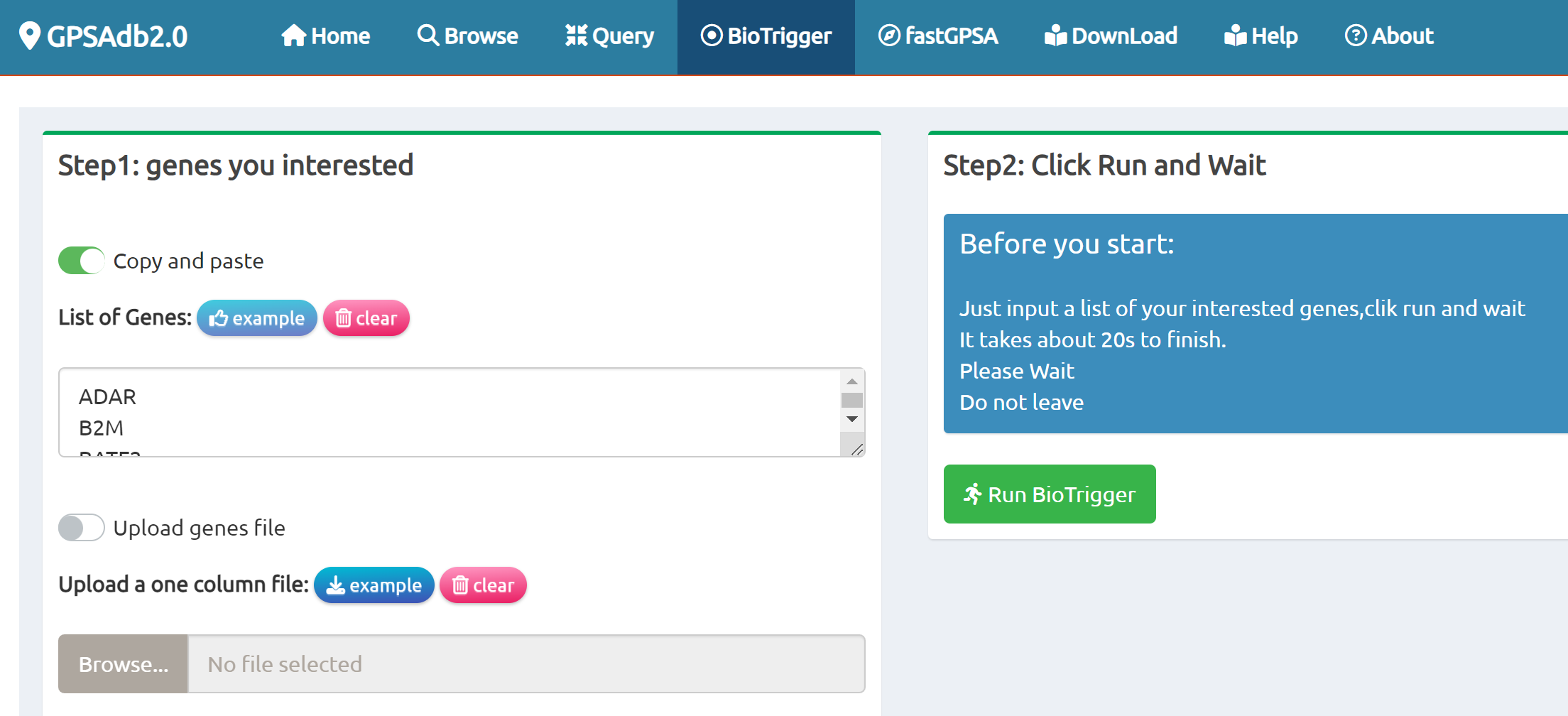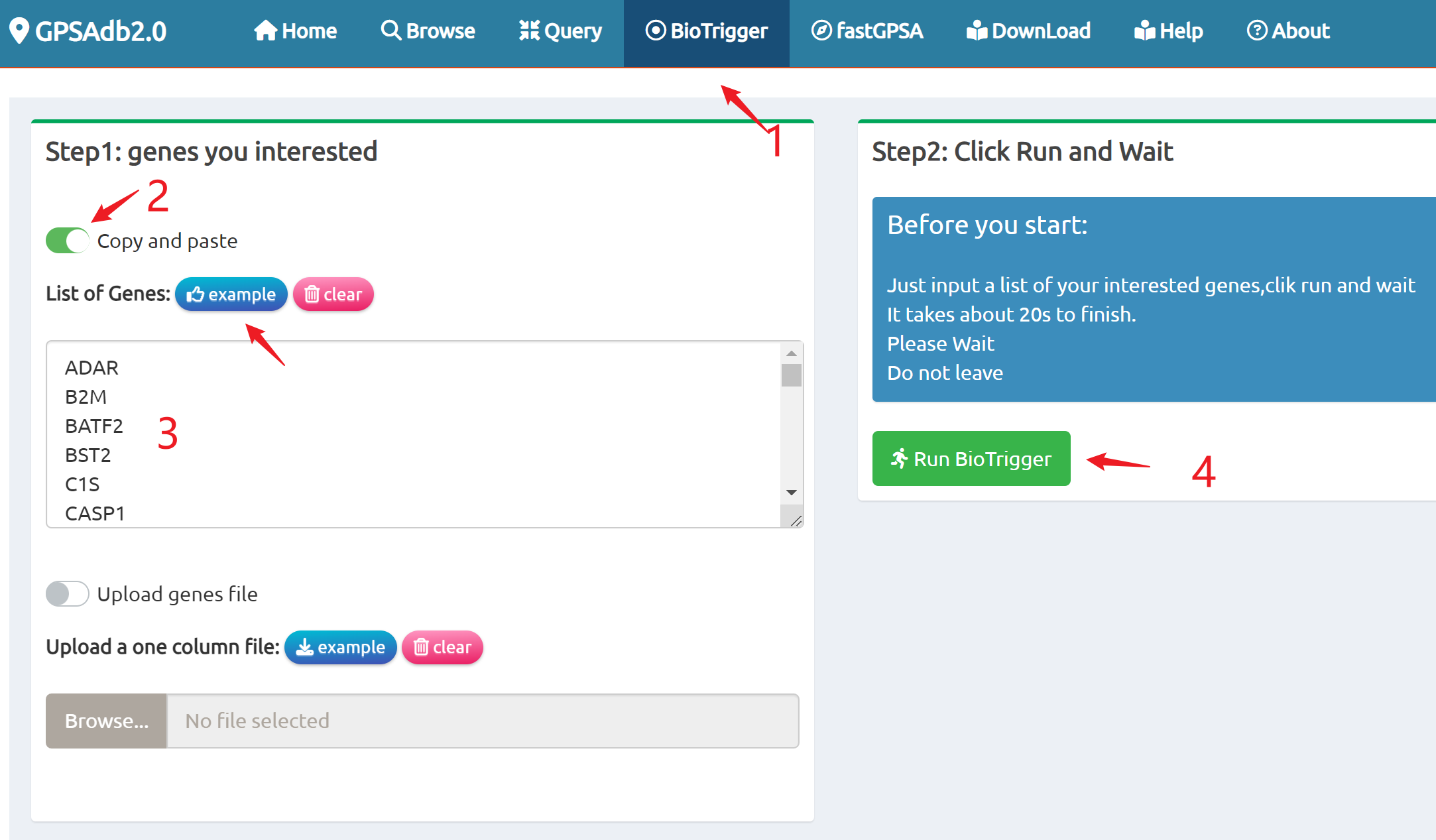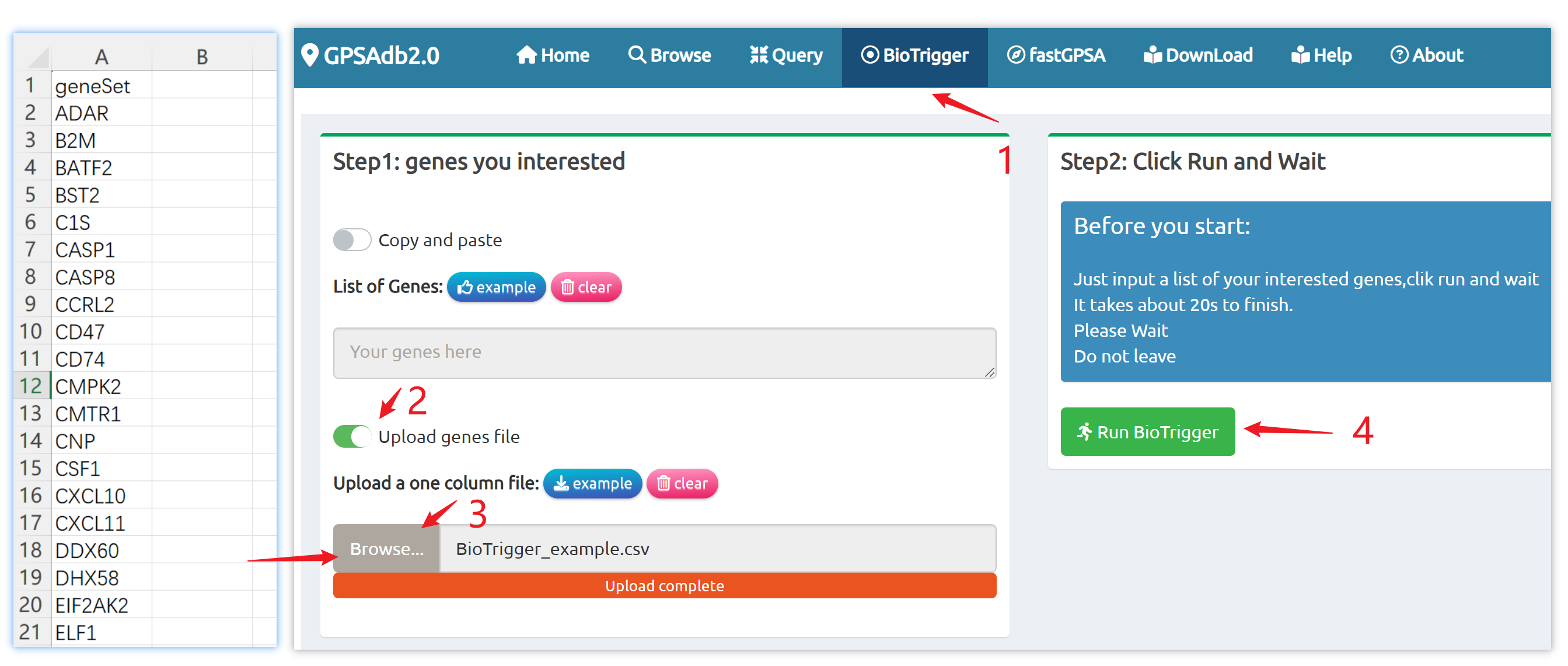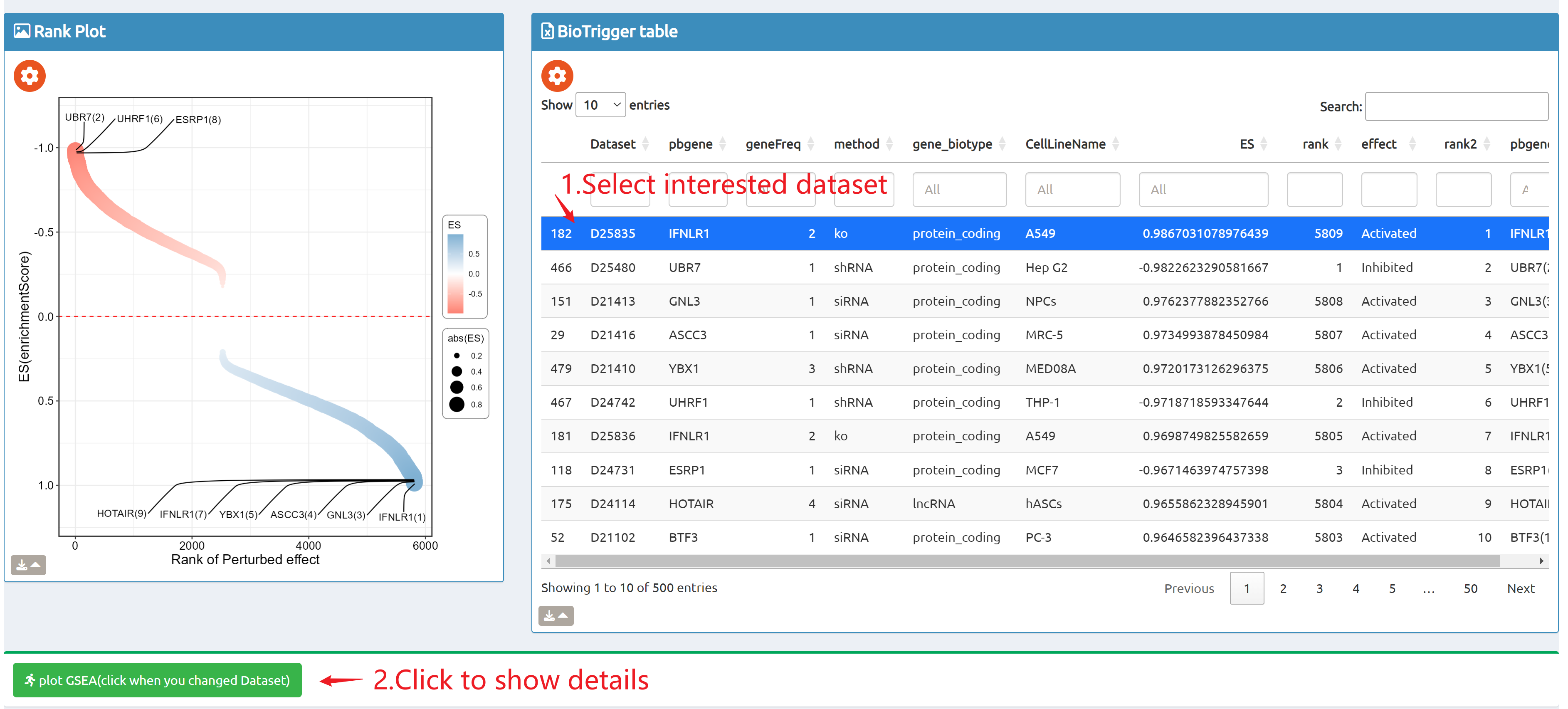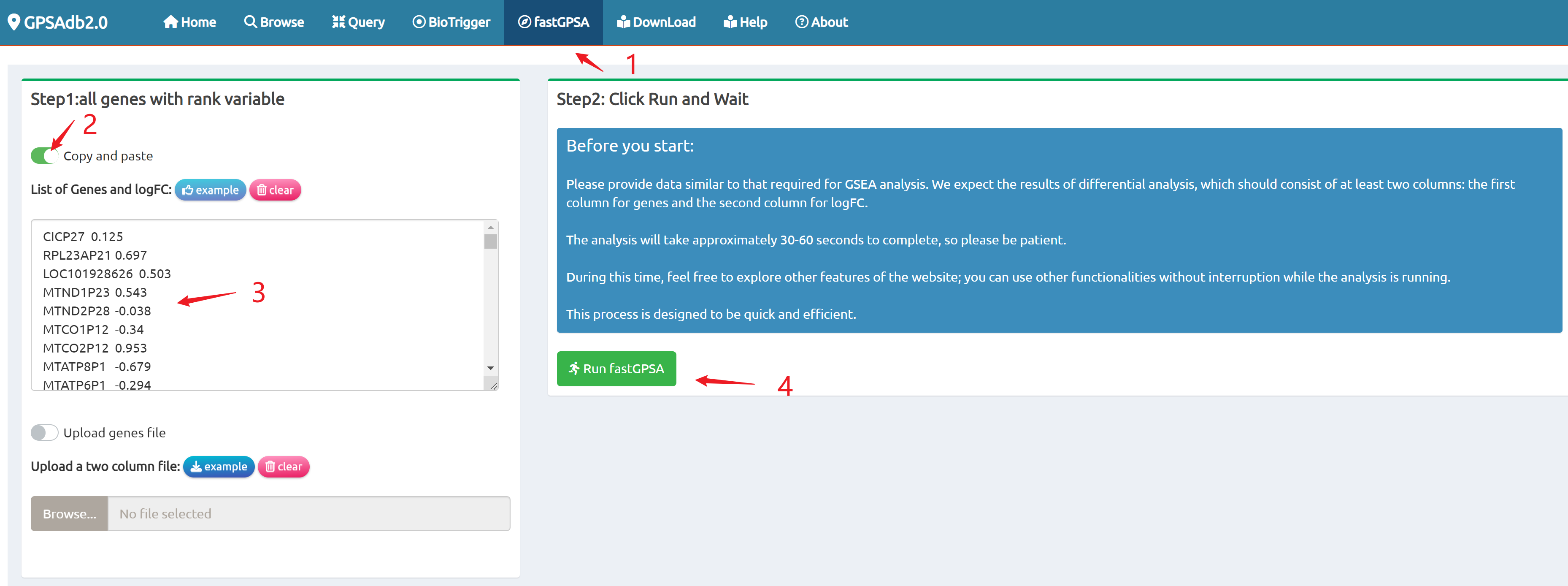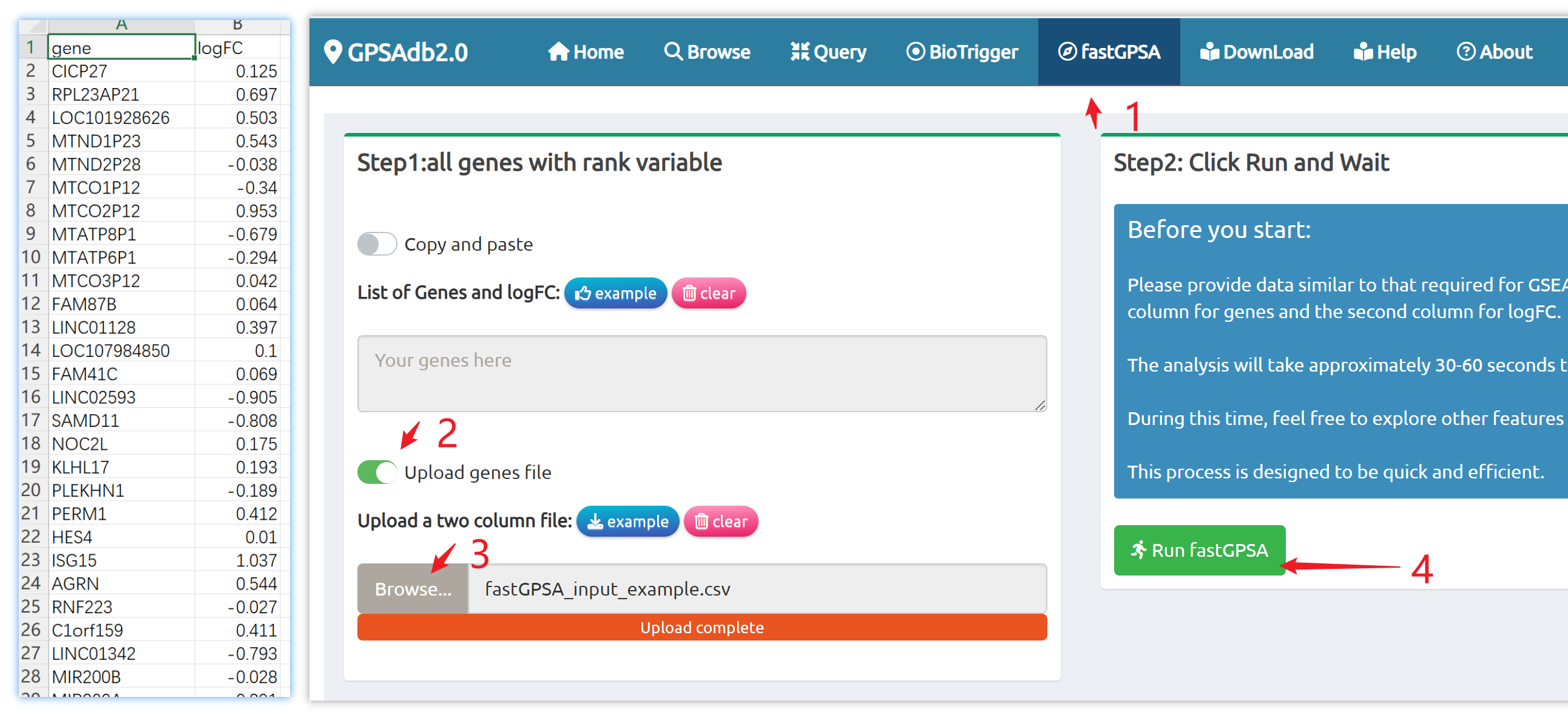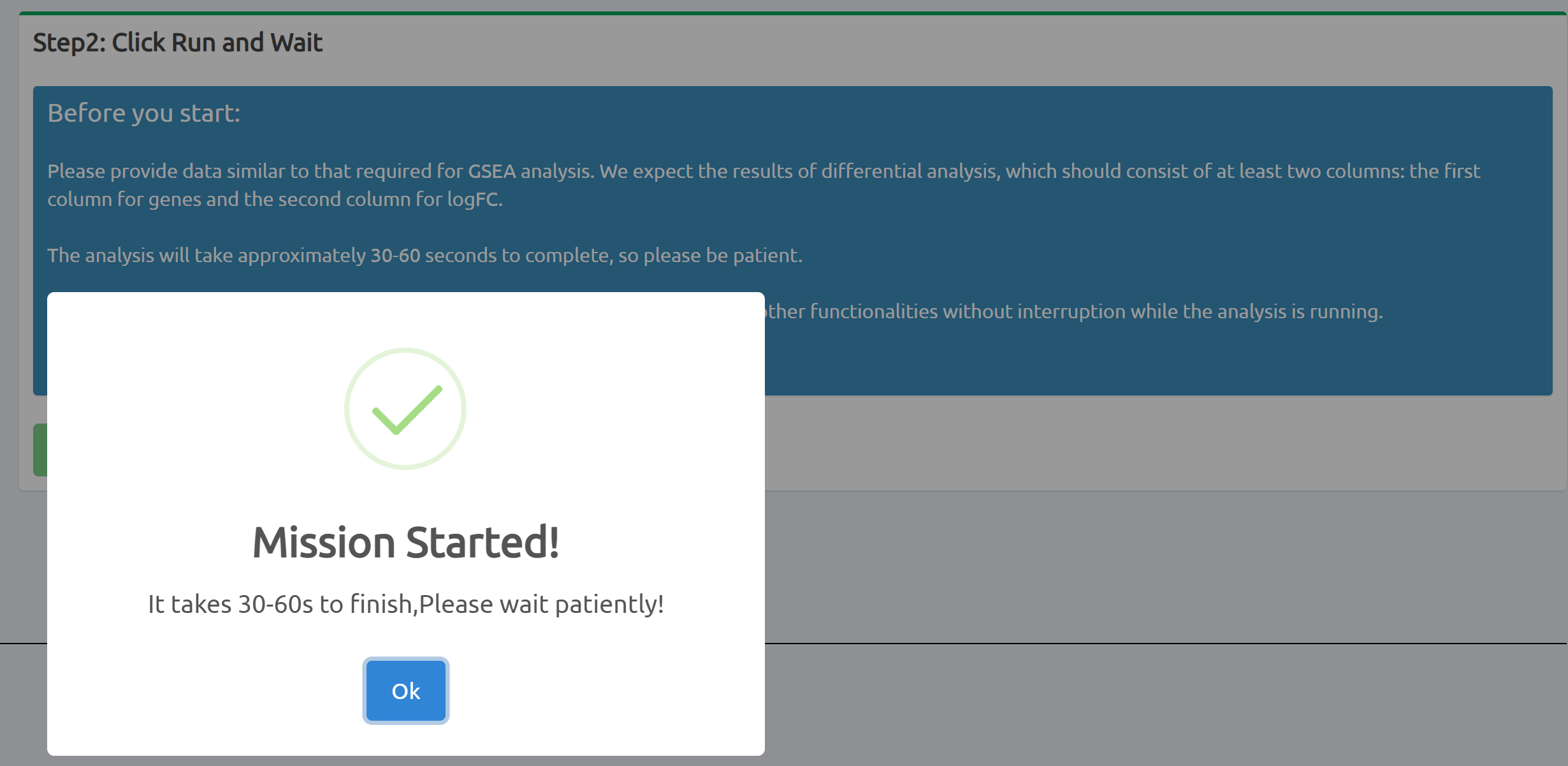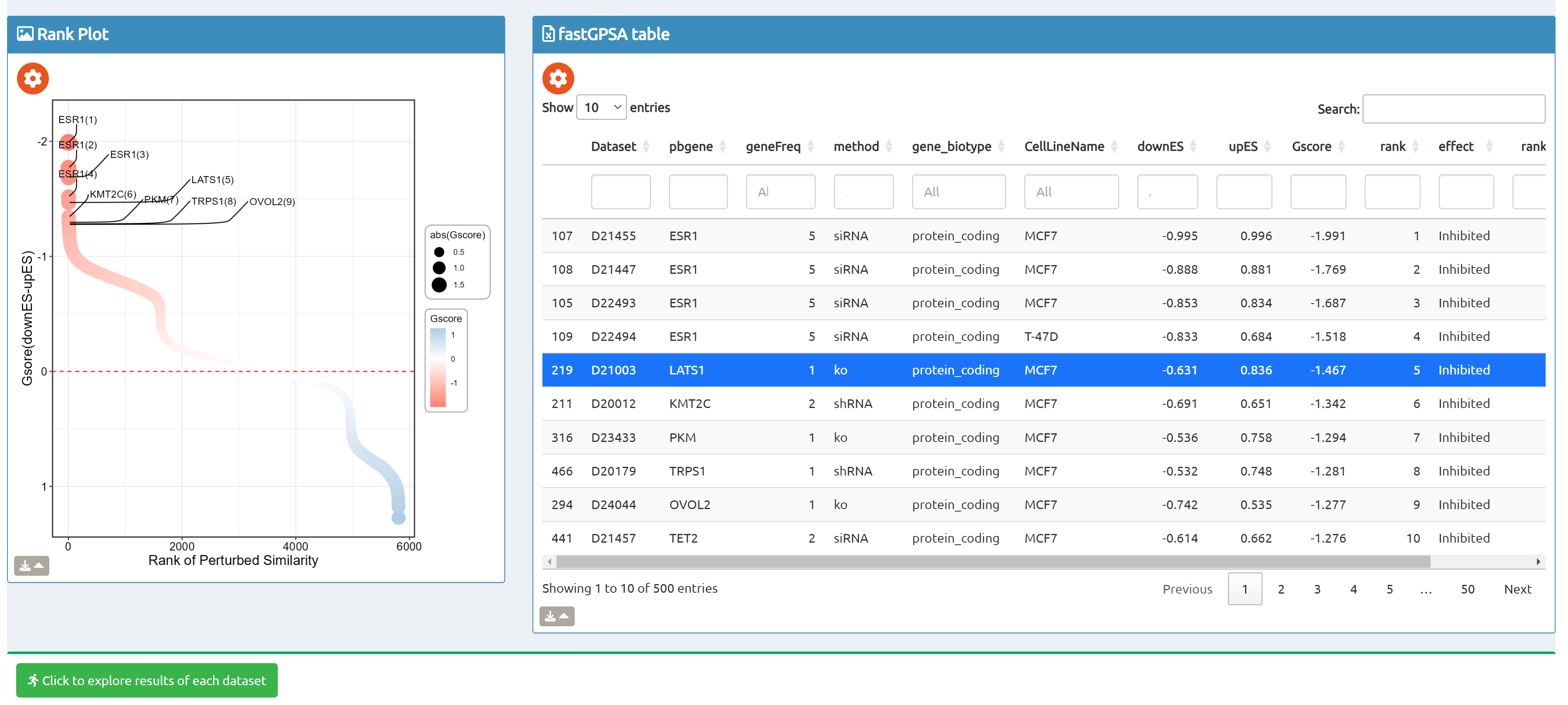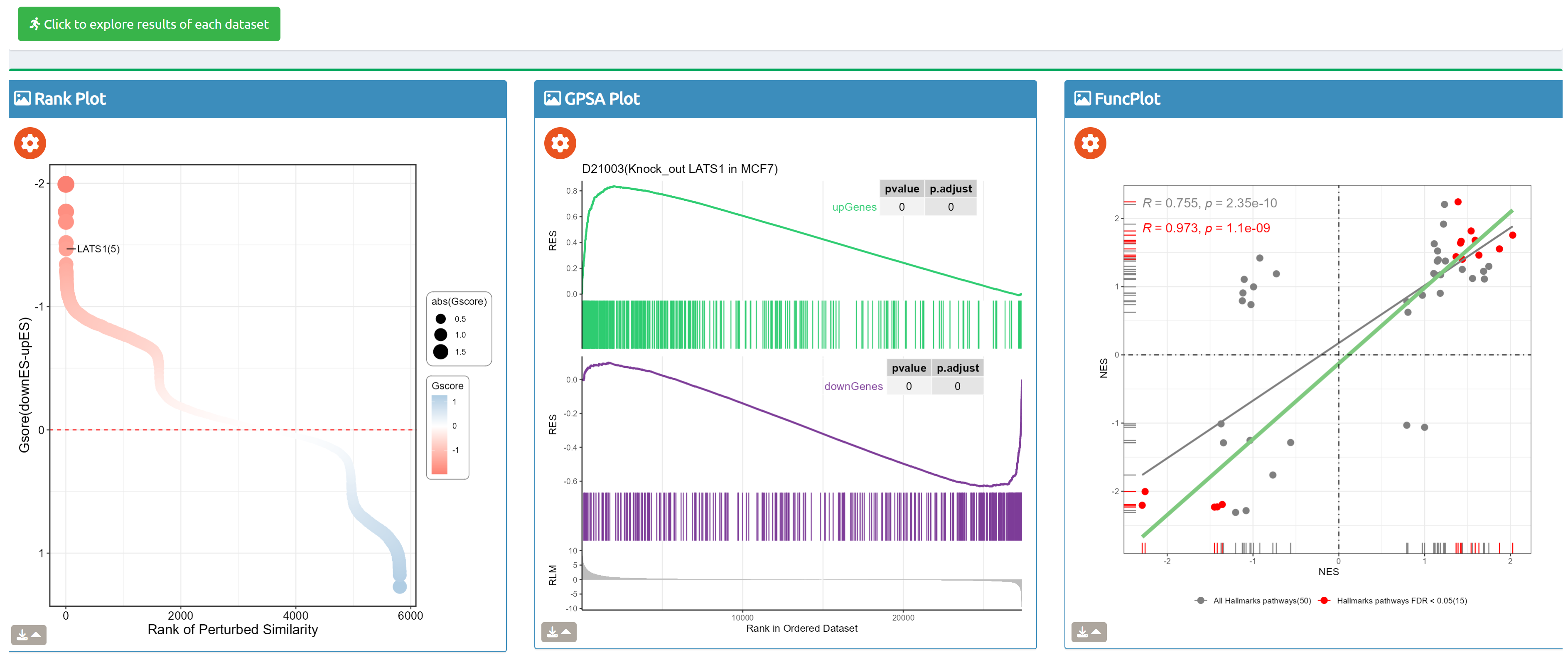The Browse page is the entry point for inspecting, exploring, and analysing every dataset currently curated in GPSAdb (6,245 in total).
Here you can quickly filter the collection by
- Perturbed gene – the gene symbol knocked-out, knocked-down, over-expressed, etc.
- Cell line – the cellular background in which the perturbation was performed.
- Tissue / cancer type – the biological or clinical origin of the cell line.
- Perturbation modality – CRISPR, RNAi, small-molecule treatment, and so on.
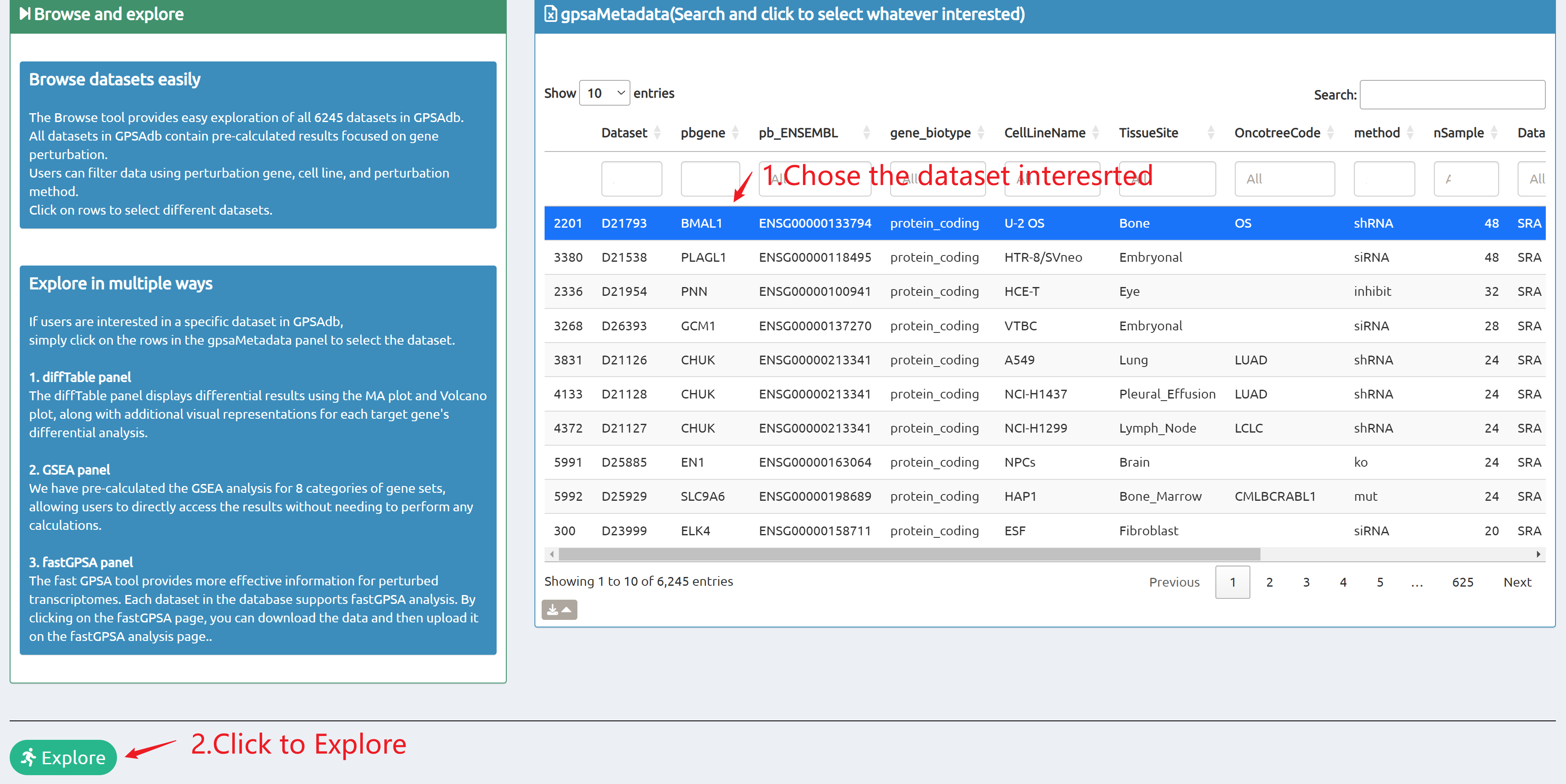
After selecting the datasets of interest, click Explore.
GPSAdb will instantly extract the relevant results and present them in a three-tab report:
- diffTable – differential-expression statistics & visualisations
- GSEA – eight pre-computed gene-set enrichment analyses
- fastGPSA – a rapid pathway/phenotype scoring module
diffTable Tab
The diffTable tab displays three exploratory plots for each dataset:
- PCA – overall sample structure
- Volcano plot – log₂ FC vs. statistical significance
- MA plot – mean expression vs. log₂ FC

Below the plots you will find the complete table of differential-gene-expression (DGE) results, plus a quick single-gene expression viewer:

GSEA Tab
For every dataset, GPSAdb pre-computes GSEA results against eight popular gene-set libraries (Hallmark, KEGG, Reactome, etc.).
Switching between libraries is instantaneous:

Because each library may return a different number of enriched terms, we provide a Settings panel to fine-tune the plot layout (cut-offs, label size, colour palette, …).
Summary plots come in three flavours:
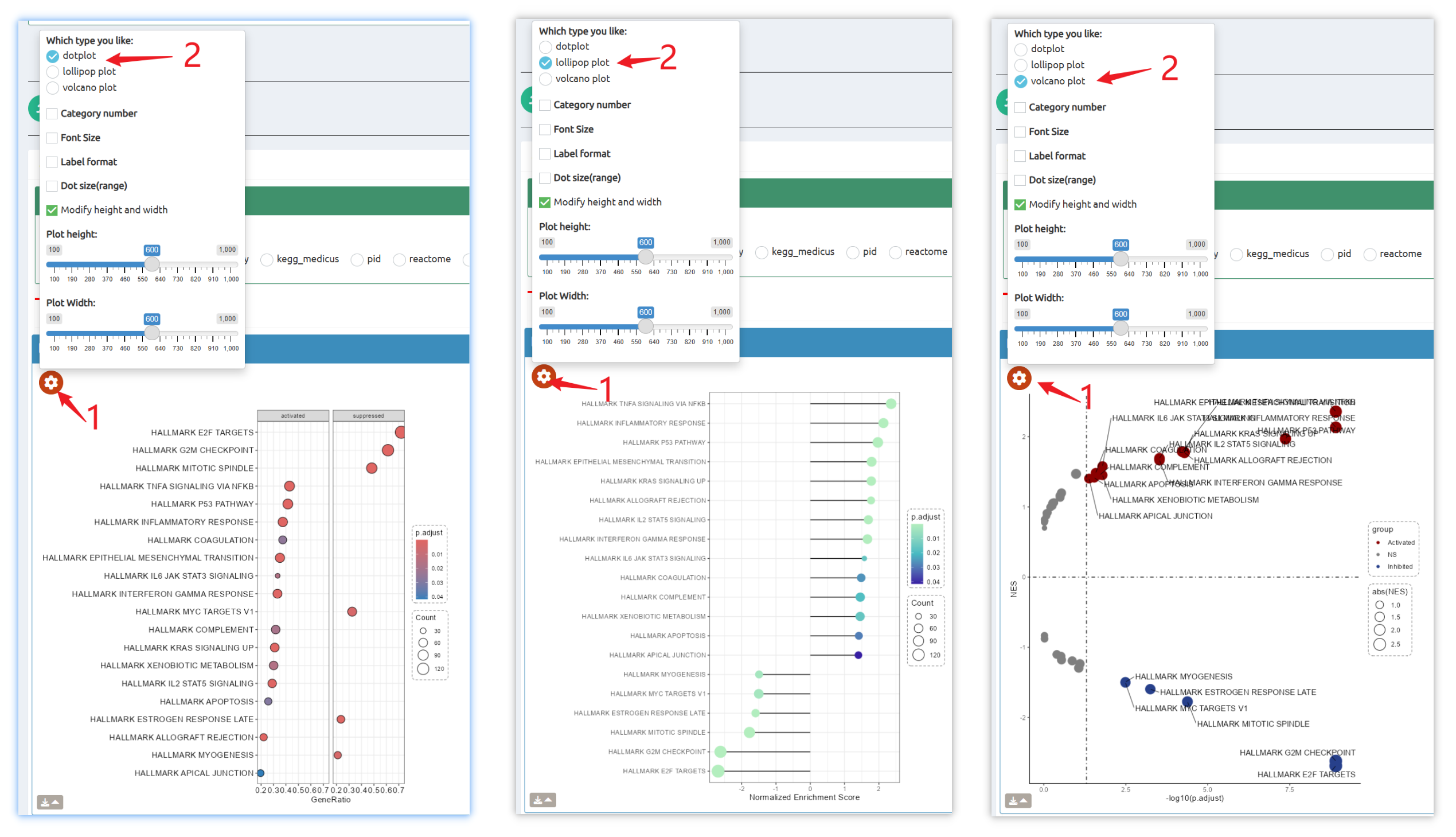
Combine the parameters until the figure looks balanced and publication-ready, then download it in PNG, PDF, or PowerPoint format:

For individual enrichment curves (GSEAplot), you can optionally toggle leading-edge labels to highlight the core contributing genes:
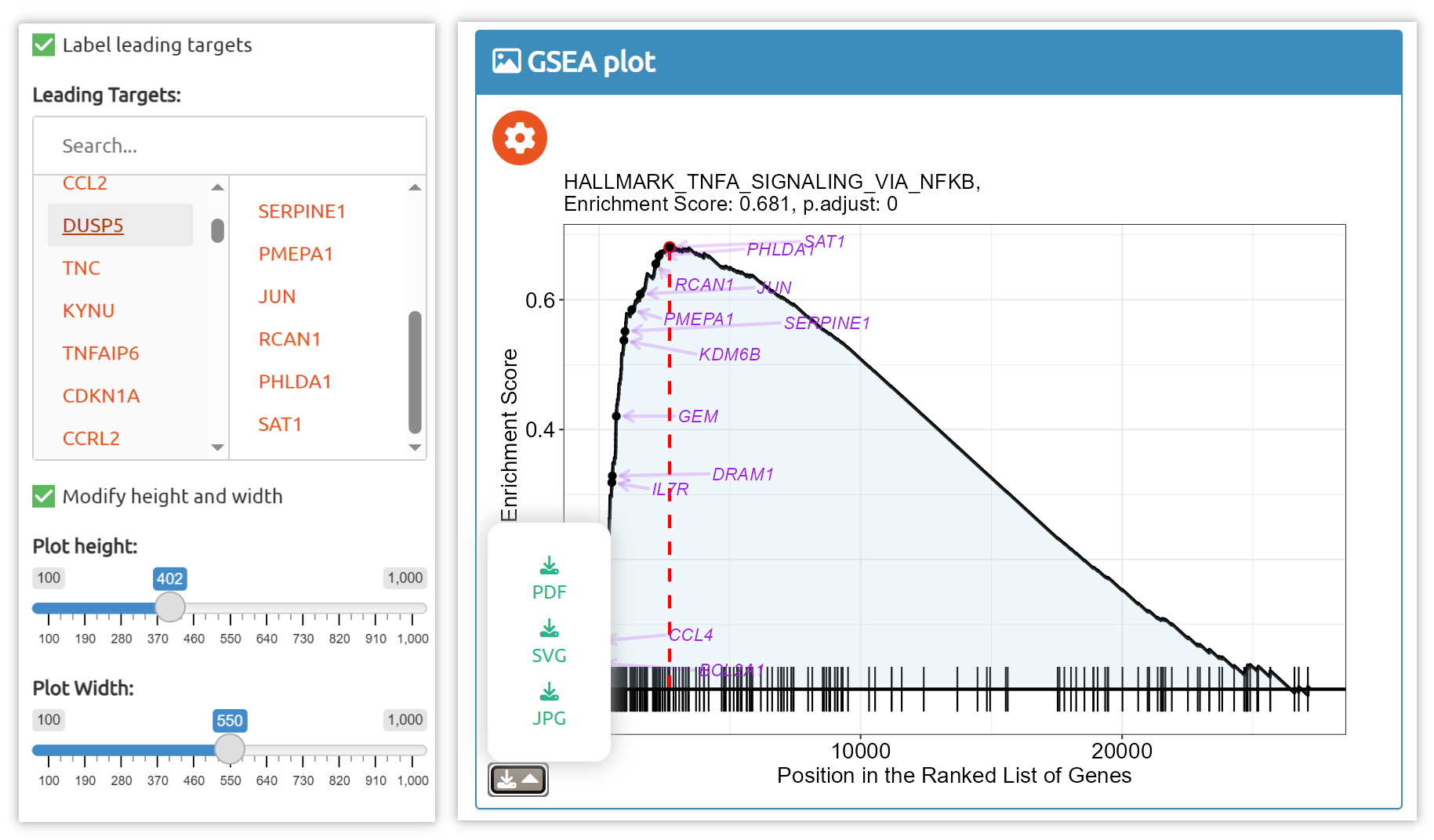
fastGPSA Tab
Alongside the standard DGE output, GPSAdb 2.0 introduces fastGPSA: a lightning-fast gene-perturbation signature analysis.
Every dataset in GPSAdb can be sent to fastGPSA with a single click, or you can upload your own contrast for analysis.

For detailed usage instructions and biological interpretation tips, please refer to the dedicated fastGPSA Tutorial and the Case Study section.
Start Exploring!
You are now ready to interactively explore all 6,245 datasets provided by GPSAdb 2.0.
Filter, visualise, enrich, and score – the entire resource is at your fingertips.
 This work is licensed under a Creative Commons Attribution 4.0 International License.
This work is licensed under a Creative Commons Attribution 4.0 International License.

